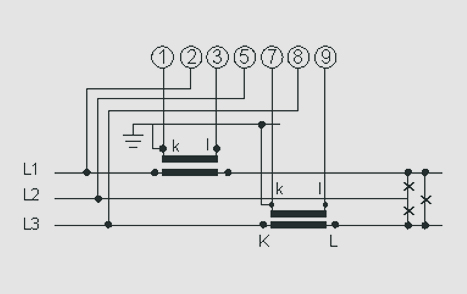
PF-72
PF--96
PF-144
Beemet Power Factor meters are used to monitor changing power factor conditions on irreversible balanced load systems, with models supporting standard power factor meter connection types.
The moving coil indicators PF 72/96/144 and a phase angle adjuster are used to monitor changing power factor conditions on ir-reversible balanced load systems & Unbalanced systems, including power factor meter 3 phase applications. The power factor is indirectly determined by measuring the phase angle between current and voltage (both sinusoidal). However the indicators are calibrated in values of cos ö of the angle ö . These meters offer several advantages in Switchboard & Generating Set panels. Number of meters can be mounted in a single Cut out(Mosaic Mounting). The Bezel, Front window glass and Dial can be easily replaced.
Salient Features
• Knife edge pointer.
• Glass filled polycarbonate housing.
• Easily replicable glass and bezel.
• Easy installation with swivel screws.
General Specifications
Scale & Pointer
| Pointer | Knife-edge pointer |
| Pointer deflection | 0 - 90º |
| Scale characteristics | Non-Linear |
| Scale division | Coarse-fine |
| Interchangeability | Scale are interchangeble |
MECHANICAL DATA
| Case details | Moulded square case suitable for mounting in Control / Switchgear panels, Machinery consoles. |
| Case material | Glass filled polycarbonate flame retardant and drip proof |
| front facia | Glass |
| Colour of bezel | Black |
| Position of use | Vertical |
| Panel fixing | Swivel screws |
| Mounting | Stackable in a single cutout |
| Panel thickness | < 25 mm |
| Terminals | Hexagon studs, M4 screws and
wire clamps E3 (DIN 46282) |
ELETRICAL DATA
| Measured quantity | Power Factor |
| Overload capacity (acc to IS | 1248/ IEC 51/ DIN EN 60051) |
| Short duration | 2 times rated voltage 5 Sec max overload 10 times rated current 5 Sec max overload |
| Accuracy | 1.5 according to IS:1248 |
Enviromental Condition
| Climatic suitability | Climate category II as per IS : 1248
(climatic class 3 according to VDE / VDI 3540) |
| Operating temperature | -10 ... + 550 C |
| Storage temperature | -25 .... + 650 C |
| Relative humidity | < 75% annual average non-condensing |
| Shock resistance | 15g. 11ms |
| Vibration resistance | 10-55-10 Hz/0.15 mm 1.5 g at about 50 Hz. |
Dimensions

| Model | Dimensions (mm) | Scale Length | ||||||
|---|---|---|---|---|---|---|---|---|
| A | B | C | D | E | F | Panel Cutout | ||
| PF-72 | 72 | 66 | 80 | 68 | 5.5 | – | 68 | 61 |
| PF-96 | 96 | 90 | 53 | 92 | 5.5 | 64 | 92 | 97 |
| PF-144 | 144 | 136 | 53 | 138 | 6.5 | 64 | 138 | 146 |
Connection Diagrams

PF 96/144 Single phase

PF 72/96/144 three ph. bal. Load
PF 72/96/144 three ph. bal. Load

PF96/144 3ph. 3W Unbal. Load

PF 96/144 3ph. 4W Unbal. Load
FAQ
A power factor meter measures the factor of an electrical system by calculating the ratio of real power to apparent power. It helps to assess energy efficiently by optimizing electrical systems and reducing costs.
A single phase power factor meter is needed to measure power factor in single phase electrical systems, providing accurate readings of power helping its users to maintain efficient energy usage in their applications.
An analog power factor meter works by displaying measurements using dials and needles, indicating power factor by showing how much power is used compared to apparent power. This is a very simple design making it reliable for basic monitoring.
Power factor meter diagram reads by showing the terminals for voltage and current connections, helping users understand how to set up and read its reading accurately. It illustrates how the meter connects to the electrical system.
Pf meter helps identify inefficiencies in your electrical system thus power meters are monitored by pf. It reduces energy costs and enhances overall system performance.
Digital power factor meters are precise with their measurements with advanced features like data logging and multiple measurement functions. These are ideals for those who need detailed insights for their electrical systems as compared to traditional analog meters.
A PF meter connection shows how the meter is linked to the power system. In single or 3-phase systems, a proper PF meter connection ensures accurate power factor readings. Beemet’s PF meters (PF-72, PF-96, PF-144) work with both balanced and unbalanced loads.
